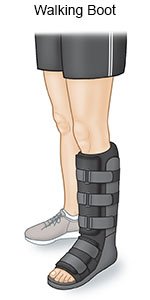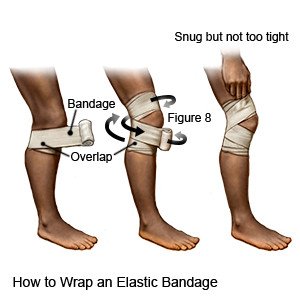Sever Disease
Medically reviewed by Drugs.com. Last updated on Aug 4, 2025.
AMBULATORY CARE:
Sever disease
is heel pain that develops when your child goes through a growth spurt. Your child has a tendon that attaches to the back of his or her heel called the Achilles tendon. This tendon does not grow as quickly as your child's bones. The tendon stretches and pulls on your child's heel, which causes pain. Sever disease usually occurs between the ages of 8 and 14 years. It is most common in active children 9 to 12 years old.
Common signs and symptoms:
- Pain in one or both heels that comes and goes
- Slight swelling in one or both heels
- Pain when the heel is squeezed on both sides
- Pain that get worse with activities, such as sports that involve running and jumping
- Improved pain with rest, or in the mornings
- Limping or walking on the toes
- Pain when wearing cleats or shoes with less arch support or cushion
Call your child's doctor if:
- Your child has severe pain that does not go away with rest.
- Your child has severe redness or swelling in his or her heel.
- Your child has a fever of 101.5°F (38.6°C) or higher.
- You have questions or concerns about your child's condition or care.
Treatment
may include any of the following:
- NSAIDs , such as ibuprofen, help decrease swelling, pain, and fever. This medicine is available with or without a doctor's order. NSAIDs can cause stomach bleeding or kidney problems in certain people. If your child takes blood thinner medicine, always ask if NSAIDs are safe for him or her. Always read the medicine label and follow directions. Do not give these medicines to children younger than 6 months without direction from a healthcare provider.
- Acetaminophen decreases pain and fever. It is available without a doctor's order. Ask how much to give your child and how often to give it. Follow directions. Read the labels of all other medicines your child uses to see if they also contain acetaminophen, or ask your child's doctor or pharmacist. Acetaminophen can cause liver damage if not taken correctly.
Help your child manage Sever disease:
- Limit running, jumping, and other high-impact activity. This will rest your child's heel and decrease pain. He or she may need to completely stop certain activities or exercise until the heel pain is gone. Low-impact activity may be a good substitute. Examples include biking, swimming, or the elliptical machine.
- Ice should be applied on your child's heel for 15 to 20 minutes every hour or as directed. Use an ice pack, or put crushed ice in a plastic bag. Cover it with a towel before you apply to it your child's heel. Ice helps prevent tissue damage and decreases swelling and pain.
- Remind your child to stretch his or her calf. First thing in the morning, after school, and before bed are great times to do stretches. Each stretch should be 30 to 45 seconds.
- Shoe inserts may be needed. Your child's healthcare provider may give you heel pads or cups for your child's shoes to decrease pressure on the heel bone. You may also be given shoe inserts with firm arch support and a heel lift. Make sure your child wears good quality shoes with padded soles. Your child should not walk barefoot.
- A walking boot or cast may be needed if your child's pain is severe. These devices are usually worn for 2 to 4 weeks.

- An elastic wrap or compression stocking may help with pain and swelling. Ask how to apply the wrap or stocking.

Follow up with your child's doctor as directed:
Write down your questions so you remember to ask them during your child's visits.
© Copyright Merative 2025 Information is for End User's use only and may not be sold, redistributed or otherwise used for commercial purposes.
The above information is an educational aid only. It is not intended as medical advice for individual conditions or treatments. Talk to your doctor, nurse or pharmacist before following any medical regimen to see if it is safe and effective for you.
Further information
Always consult your healthcare provider to ensure the information displayed on this page applies to your personal circumstances.
